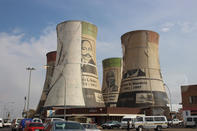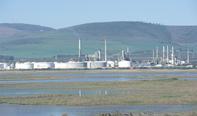The Kyoto Agreement

The United States and China are the two biggest greenhouse gases emitters. The US is an Annex country and China a non-Annex country. Given the global trade pressures and historical tension between the two countries, the US is unlikely to find the political will to pay for China to clean up its act. Consequently, the climate change treaty of Kyoto, was described in the past, as politically untenable for the Republican administration.
The reason this matters is because the US, with only five per cent of the world's population, produces twenty per cent of the greenhouse gas emissions. Several paces behind is China with 14.74 per cent of emissions, followed by the European Union with 14.05 per cent and the Russian Federation with 5.72 per cent. India comes in fifth place with 5.48 per cent and Japan with 3.98 per cent. The figures drop off sharply from there.
In 2011, Canada officially renounced the Kyoto Protocol. Then-Environment Minister Peter Kent said that the agreement of Kyoto consisted of unworkable goals, because the United States and China never agreed to Kyoto, and that a new agreement was needed to address greenhouse gas emissions.
For the planet to survive, greenhouse emissions need to be reduced quickly and drastically. As the biggest emitter, it is essential that the US puts its shoulder to this particular plough. In 1997 the US signed Kyoto under Democratic President Bill Clinton. But when his Republican counterpart moved into the Oval Office for the next presidential term, George Bush shied away from ratifying the agreement.
China
Coal is by far the filthiest fossil fuel, and China is the biggest producer and user of it. The country is a rising behemoth that hosts twenty per cent of the world's population (1.3 billion versus the 290-odd million in the US), with the third-highest gross domestic product, and growing at three times the rate of the global average. But it needs coal to keep the engines of economic growth firing.
China is the second-largest producer of electricity globally. Nearly 80 per cent of that electricity comes from chucking coal down the chutes of power stations across its massive girth. The country's government has made its policy of continued reliance on coal well known, so, as the demand for power doubles by 2020, the increase in annual coal consumption will climb to about 3.5 billion tons.
China's contribution to air pollution across Asia is massive. Airborne ash and soot - black carbon from the burning of coal and soot particles from wildfires and domestic wood use - are clogging up the air and altering regional climate. For the past twenty years the southern part of China has seen an increase in flooding while the north is becoming drier and drier.
While scientists admit that they cannot tell exactly how much air pollution is responsible, it most definitely has played a part. The particulate matter causes atmospheric warming but keeps the ground cool. It also causes smaller droplets to accumulate during the formation of clouds, which ultimately reduces the amount of rain that falls.
Nitrous dioxide, emitted through the combustion of fossil fuels and biomass, has accumulated in the troposphere above China by 50 per cent between 1996 and 2004 (while a large reduction has been noted over parts of Europe and the US). Three out of four Chinese urbanites live below the national air quality standard and the region is the most severely affected by acid rain globally.
Peter Aldhous comments that China has the potential to single handedly emit enough CO to negate all other nations' efforts to control their greenhouse gas emissions. The future of China on the world emissions stage is dependent on its ability to develop clean coal-burning technology. Ironically, China's size (in and and numbers) is going to impact on the rest of the world, but it is global trade and foreign investment that feeds into the growth rate.
The Rest of the World

The US and China aside, the rest of the industrialised and developing worlds should remember their own culpability. This includes the wealthier sectors in countries such as our own with the so-called two economies where rich and poor are juxtaposed. South Africa produces about 1.23 per cent of global greenhouse gases but per capita it is among the worst emitters of greenhouse gases in the world.
The World Resources Institute ranks South Africa as the nineteenth biggest greenhouse gas emitter in the world and our per capita output is more than 3.5 times the average for the developing world. Comparing per capita production of greenhouse gases, measured in equivalent tons of carbon dioxide (CO), the US produces 23.8 tons of CO per person. South Africa produces 9.16 tons per person. China only produces four tons per person. Australia, although only responsible for 1.46 per cent of annual greenhouse gas emissions, produces 25.3 tons of CO per person. That’s higher than the US. As an Annex I country, Australia has also avoided ratifying the Kyoto Protocol.